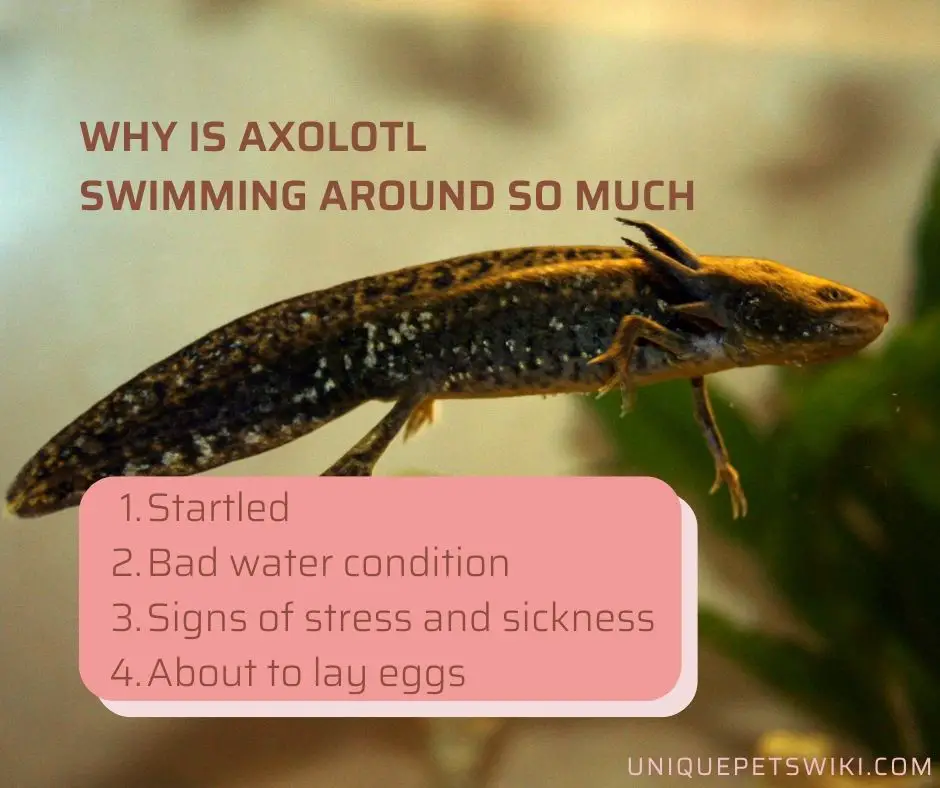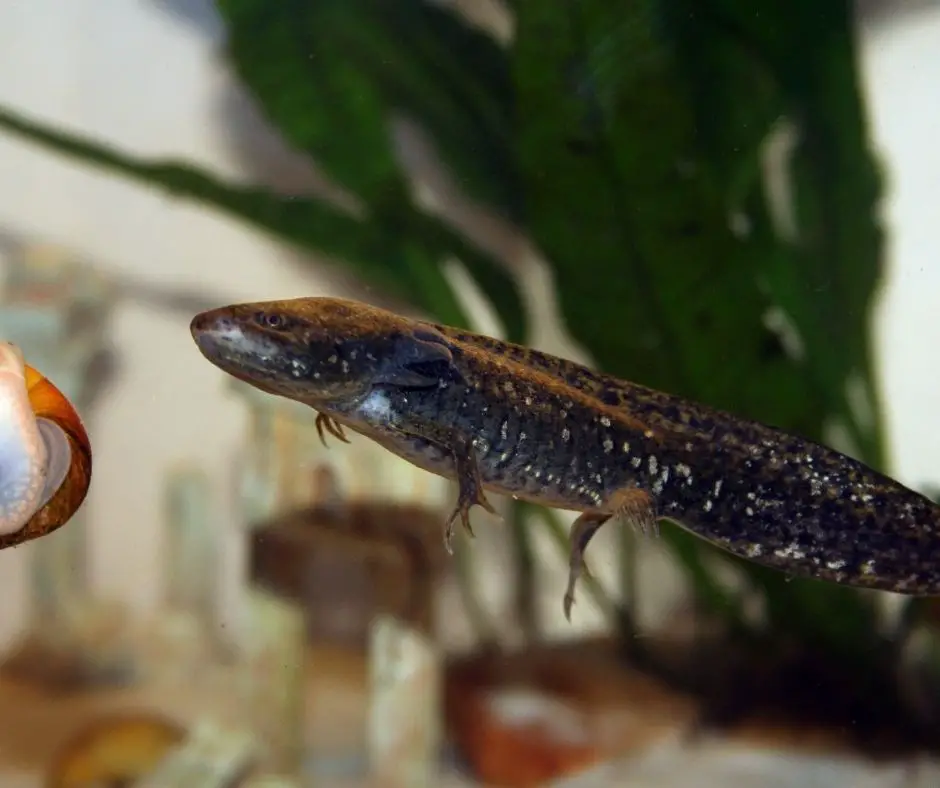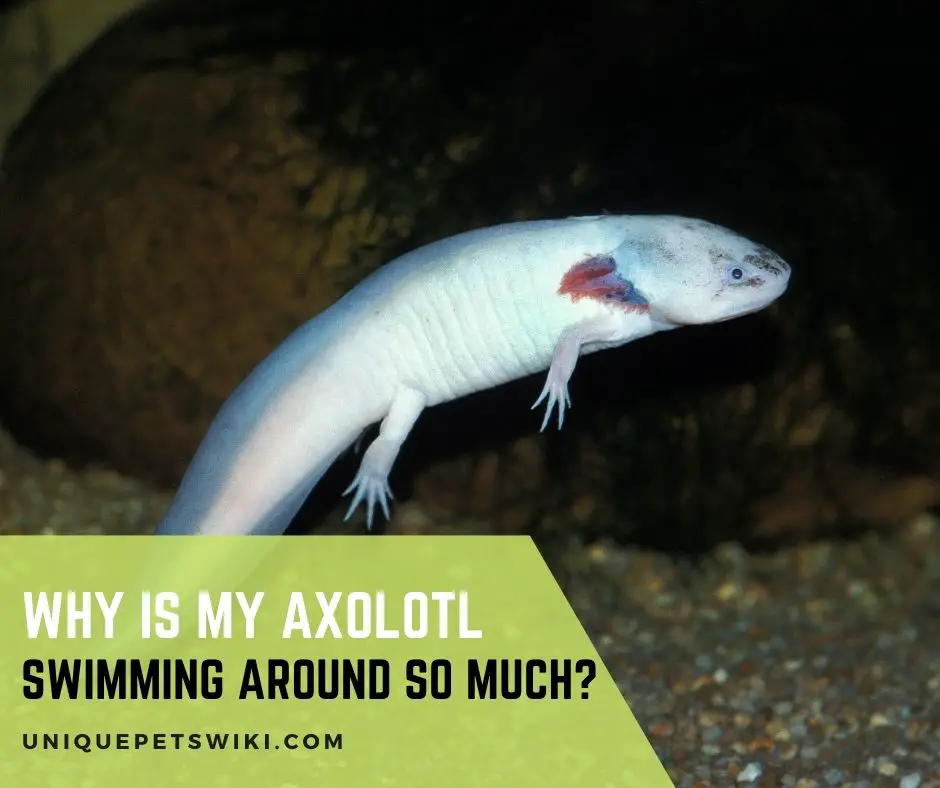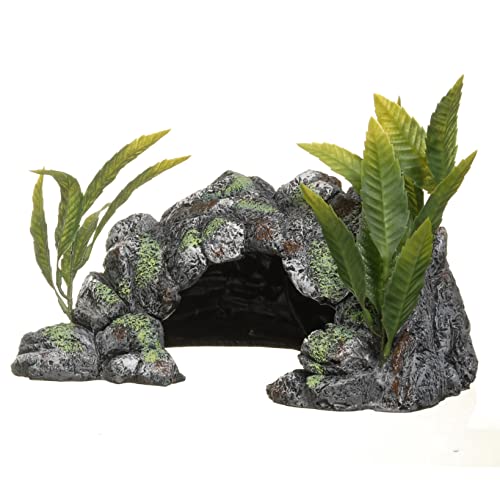Since axolotls must stay in the water to prosper, swimming is a part of their daily routine.
However, sometimes swimming can be extravagant, and as an axolotl owner, you may wonder why my axolotl is swimming around so much.
Axolotls’ behaviors are numerous, and most of them may go unnoticed unless you spend a copious amount of time with your axolotl frequently.
Axolotls can start to swim around their tank much more than usual for various reasons, which could sometimes be serious and worrying or typical. This article explains everything that can make axolotls accelerate their swimming.
Contents
Why Is My Axolotl Swimming Around So Much?
An axolotl could be swimming so much because of stress, sickness, bad water condition, or when about to lay eggs.
It’s easy to take pity on your little friend, especially when it’s swimming around nonstop and uncontrollably. Such a perplexing incident makes owners think their pet is experiencing a problem or fighting for their lives.
However, excessive swimming doesn’t always mean your axolotl is in danger. For instance, if your axolotl is young, it’s typical to see it spending time swimming around.
These axolotls are overly active and can sometimes escalate their swimming. You should only worry if the lotl is swimming around too often and its skin appears red.

Young Axolotls
If you have a young axolotl, then you know that these pets barely go inactive. They are a lot more energetic than adult axolotls, and they take delight in swimming.
While adults can spend even an entire daytime hiding, the young axies are mostly exploring the tank, especially in circumstances where the tank is new. They swim around their aquarium much more frequently.
But of course, not every young axolotl is highly active. Their temperament varies; some may be calmer, but others are exceptionally active. Nothing of this should cause you to worry.
On the contrary, if you have an old axolotl and naturally swims a lot, don’t ignore it, because the water has a serious problem that is making the axolotl want to get out.
Instead, you should check the water parameters to ascertain they’re at their correct level. Adjust any parameter that is fluctuated.
Startled
Axolotls are exceedingly sensitive to vibrations, noises, and a slight change in tank water also affects them. Many people seem to overlook the vulnerability of axolotls to light. However, these animals don’t need light.
A good example is when you turn on a light in the room, you will notice some response with your axolotl. Also, your axie may spook when you walk into the room.
Stress will make these creatures swim around so much and zoom around the aquarium. Provide plenty of places for the axolotl to hide in the tank, including caves, plants, wood, etc., to help lessen stress stemming from light.
Furthermore, practice a high level of aquarium maintenance, change the water regularly, and ensure the nitrogen cycle is at its healthy level to make the tank safe for your axie.
Marina Decor Polyresin Cave, Large
- Decor cave for your aquarium
- Includes three Amazon sword plants
- Safe and non-toxic
- Natural and realistic appearance
- Measures 5.1-inch length by 11.4-inch width by 7.7-inch height
Last update on 2022-12-29 / Affiliate links / Images from Amazon Product Advertising API
Bad Water Condition
Axolotls will swim anywhere they wish in the tank, including swimming up to the top of the tank, and this typically happens every 20-30 minutes to get air.
But in occasions where the lotls rise to the tank much more frequently, the aquarium lacks oxygen.
You may also notice the axie swimming towards the wall and wiggling hard. Another warning sign is when the axolotl’s skin turns red, demanding you check the water chemistry right away.
The axolotl becomes unsettled and looks for means to get out if anything in the tank or with the water discomforts them.
You need to pay attention to the water conditions in your axolotl aquarium. For instance, check if the nitrite, nitrate, temperatures, and ammonia are within the ideal range.
It can help if you get more pumps or a bubbler since they shoot up the oxygen exchange rate. In addition to this, ensure to change the tank water more often and replace it with fresh water with fresh oxygen.
Signs of Stress and Sickness
Do you always find your axolotl happy every time you visit its tank? If yes, allow me to congratulate you because you’re doing an incredible job. Most stresses in axolotls arise from poor tank maintenance.
However, it’s not uncommon for these animals to swim around the tank so much when they’re sick. A sick axolotl is a stressed axolotl. Axolotls are not good at hiding their stress, and you will definitely know when they have a problem.
Things like inappropriate temperatures, new tank/environment, too strong water current, low volume of water in the tank, overcrowding, and unhealthy nitrogen cycle can also cause axolotl stress.
If you want your axolotl to be stress-free, you should maintain high-quality tank water, keep the tank cycled, use a well-spaced tank, and avoid handling the axolotl excessively.

About to Lay Eggs
When a female axolotl is about to lay her eggs, you may notice her refusing food and appears to be restless. Much focus will be on the eggs she is carrying and looking for a safe place to lay them.
Axolotls produce many eggs, and they go through a highly energy-expensive process to lay these eggs. Consequently, the process places great stress on the laying female and its system and metabolism.
So then, a pregnant axie can restlessly swim around the tank while seeking a secure and stable place for laying the eggs.
You can make the journey of your pregnant axolotl less stressful by providing a couple of aquatic plants in the tank. The plants provide a stable place for spawning, and your axie will access it effortlessly.
What Do You Do If Axolotl Swimming Around So Much?
An axolotl can swim around excessively for many reasons; thus, you should be keen to observe the behavior to know what is happening. A problem with the tank water is what often causes axolotl discomforts.
And that informs you that the first thing to inspect is the current tank situation. Check to ensure the water parameters are at their correct levels.
Another thing to check when your axolotl is swimming around unusually is the presence of eggs. For pregnant axolotls, the belly will be bloated.
API FRESHWATER MASTER TEST KIT 800-Test
- Contains one (1) API FRESHWATER MASTER TEST KIT 800-Test Freshwater Aquarium Water Master Test Kit, including 7 bottles of testing solutions, 1 color card and 4 glass tubes with cap
- Helps monitor water quality and prevent invisible water problems that can be harmful to fish and cause fish loss
- Accurately monitors 5 most vital water parameters levels in freshwater aquariums: pH, high range pH, ammonia, nitrite, nitrate
- Designed for use in freshwater aquariums only
- Use for weekly monitoring and when water or fish problems appear
Last update on 2022-12-30 / Affiliate links / Images from Amazon Product Advertising API
Axolotl Swimming Around and Related Problems
Besides axolotl swimming around so much, other behaviors associated with these animals include bouncing, holding still, and not moving.
- Axolotl Not Moving
Axolotl not moving is expected because these creatures don’t move much and are often on the bottom of their tank.
But they should wake up at night since this is the time they’re active. Where the axolotl doesn’t move even after dusk, it could be sick or dead.
- Axolotl Bounce
Bouncing comes about when axolotls are sucking food into their mouth. Axolotls, especially young ones, have a very powerful suction that makes them bounce upon snapping at food.
- Axolotl Holding still
Most of these animals are not inquisitive and care less about what’s happening around them, especially old axolotls.
That’s why you see them not moving much. So, your axie holding still is normal unless you can spot other unusual symptoms.
Wrapping Up
Choosing to raise a pet axolotl introduces you to a life of learning about their different behaviors.
Don’t be surprised to see your axolotl sometimes behaving weirdly; these pets commonly express behaviors that their owners know nothing about.
But you get to learn about these pets as you continue living and interacting with them. Swimming around the tank so much is most noticeable in young axolotls because they are exceptionally active.
Axolotls may also increase their swimming around when sick, stressed, startled, or staying in poor water conditions.


